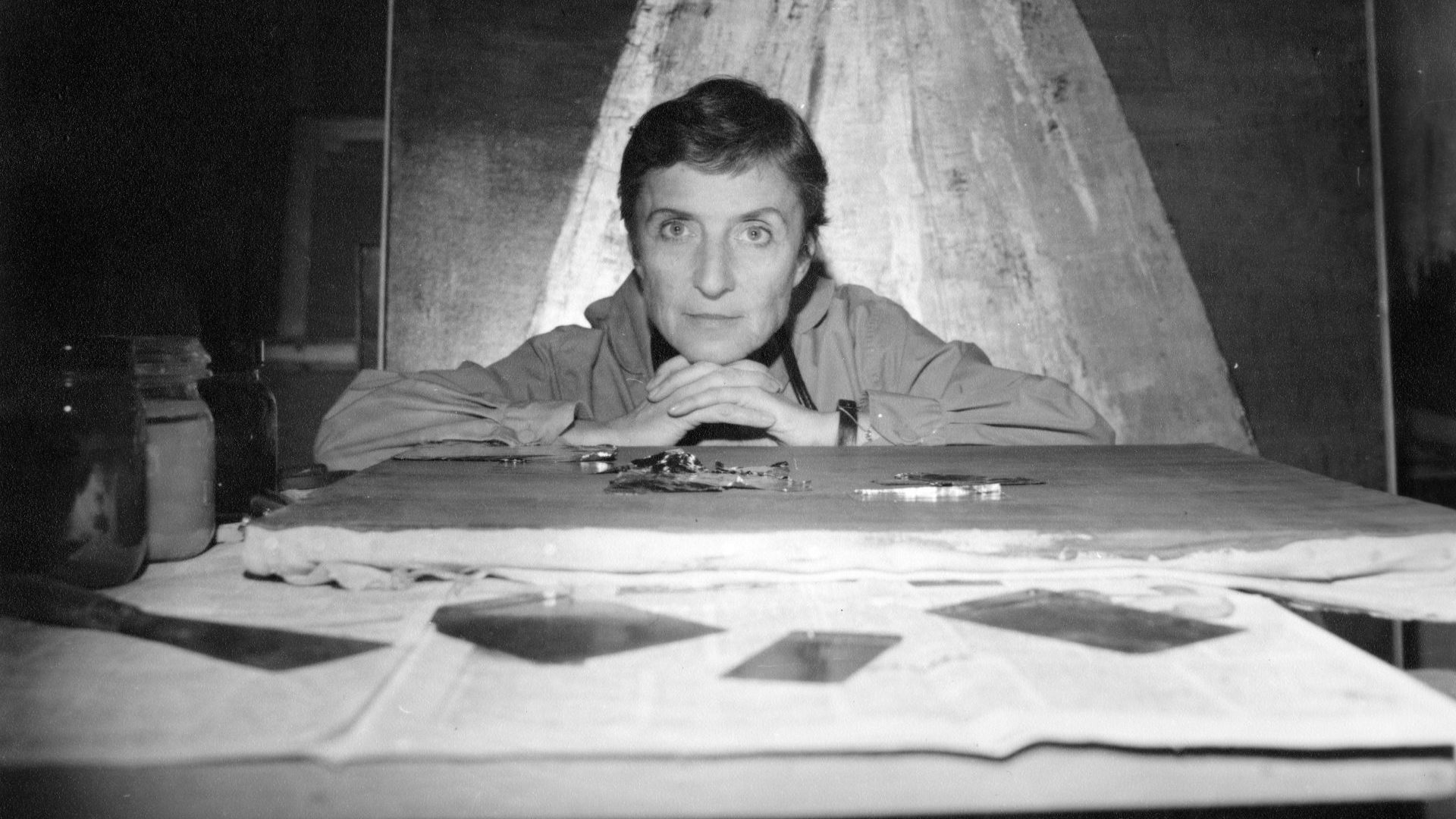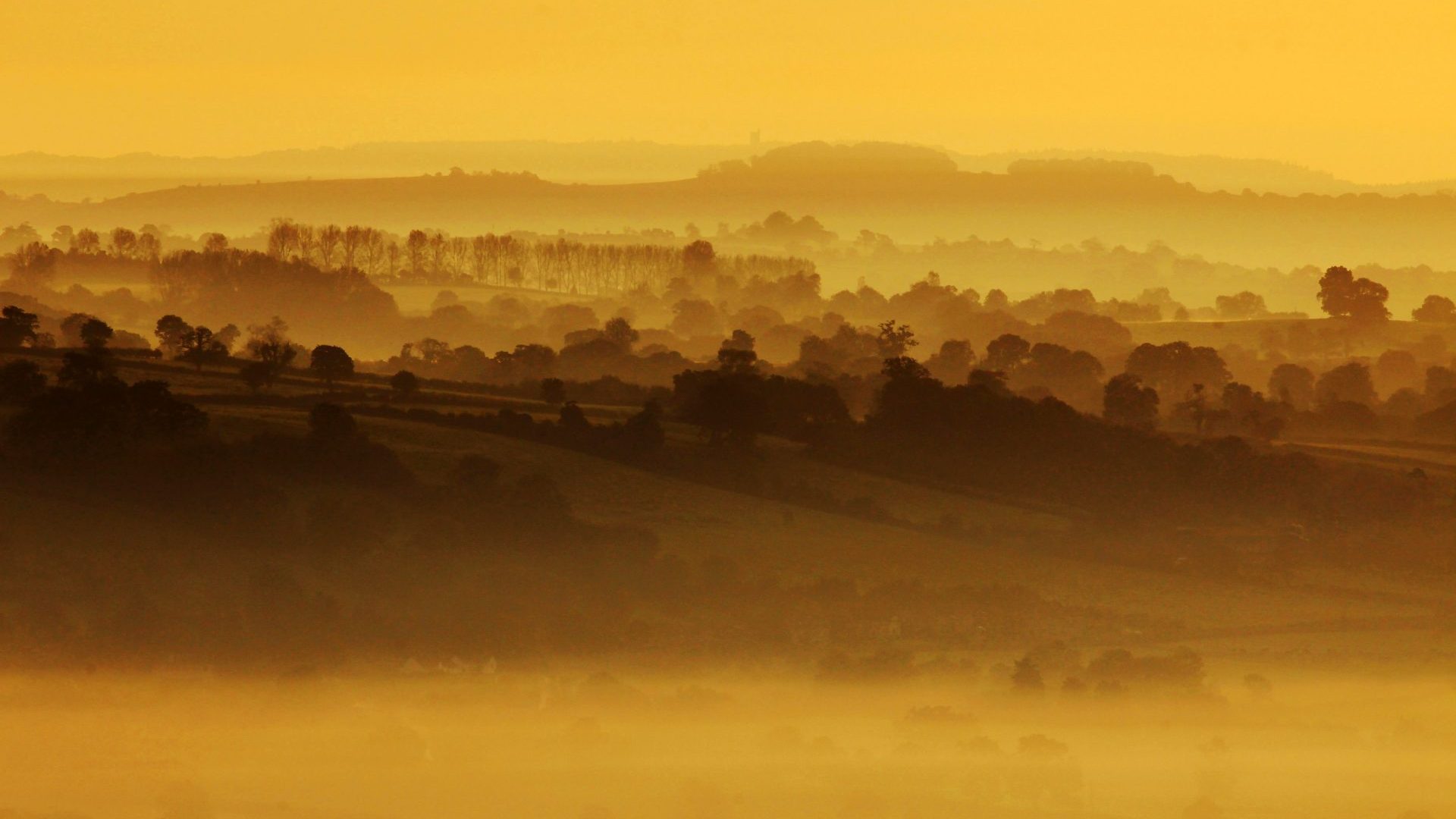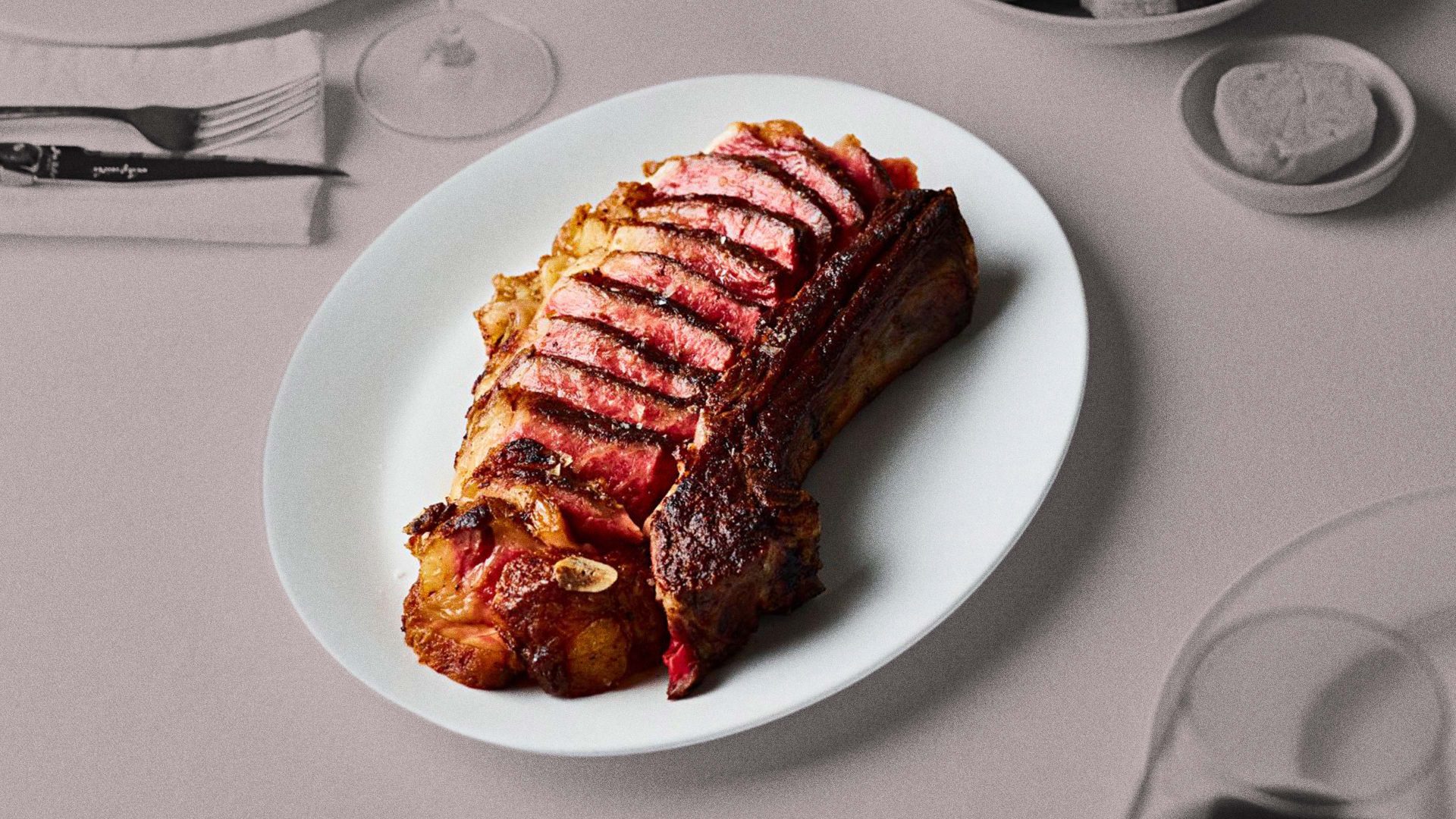During the pandemic, when galleries were out of bounds, some took to displaying their treasures online. The National Gallery was particularly effective at this, presenting a selection of the world’s finest paintings with such clarity it was as if you were there, zooming in with close-ups that revealed every splash and swirl of paint. All that with a commentary by NG director Gabriele Finaldi.
Other galleries did something similar and one outfit, a “virtual arts ecosystem”, suggested that this was the way forward. Why go to a crowded gallery when you can stay at home and enjoy a work of art without the crowds and queues?
Well, here’s one reason it didn’t take off: La Grande Montagne by Norwegian artist Anna-Eva Bergman. No amount of sophisticated technology can recreate the experience of standing in front of this painting on display in the National Gallery in the Norwegian capital, Oslo. There is something visceral about its intense luminosity that pulls you in, makes you slightly giddy.
La Grande Montagne is one of 20 paintings in Becoming Anna-Eva Bergman that celebrate the artist’s innovative use of metal leaf, the technique that gives her paintings that irresistibly magnetic quality.

in all three parts for the first time since 1956. Photo: Fondation Hartung Bergman /National Museum Borre Hostland
It took many years for Bergman (1909-1987) to discover what the alchemy of blending paint and metal could achieve. Brought up by her aunts in Norway, she showed an early talent for illustration, studied fine arts in Oslo and Vienna, then moved to Paris in 1929, where she enrolled at the academy run by cubist artist and teacher André Lhote.
She was immediately caught up in the buzz of the Parisian art world, getting to know Wassily Kandinsky, Piet Mondrian and Joan Miró as well as the German-French abstract artist Hans Hartung, whom she married the same year. They moved to Menorca, where they built a studio, but had to leave in a hurry in 1934 when Franco “suddenly kicked us out of our house”, as Bergman put it. (She drew at least one witty parody of the dictator picking his teeth. She also caricatured Hitler and the Nazis, who had invaded Norway in 1940.)
Back in Paris, the couple struggled for money and she chafed at working in the shadow of her better-known husband. The couple divorced in 1938 and Bergman returned to Norway suffering from ill health.
She concentrated on illustrations and travelled the length of the country finding inspiration in the mountains, the fjords and the pellucid light of the midnight sun, as well as settling on the island of Citadelløya to the south of Oslo, where she studied rock formations and discovered a passion for the natural world.
She wrote: “In order to create something ‘abstract’ one must study nature, indeed one can absolutely not study it thoroughly enough or get close enough to the bottom of it – both the nature that surrounds us and the nature that is within us – our own inner natures.”
But if that awareness helped to illuminate her work, it was her use of metal leaf that gave her painting its distinctive luminescence and that was influenced by medieval and Renaissance art. She was impressed by the stained-glass windows in the 13th-century Nidaros Cathedral in Trondheim, but the most profound effect on her came during a solitary trip to Italy in 1938, where she studied the use of metal leaf in the Middle Ages and in Byzantine churches.
Of all the rare talent she saw, her favourite was Fra Angelico, the Italian Renaissance artist best known for the frescoes in San Marco, Florence, whom she considered “a rare and perfect talent”.
Unlike Fra Angelico and the artists of old, Bergman did not use leaf as a frame or background to her work, rather she incorporated it into the painting, applying layer after layer of paint and metal to get the shimmering effect the viewer finds in La Grande Montagne. “I often allow the gold to have transparent colours,” she explained. “And very often it is the actual forms that are made of metal instead of the background.”
This is evident in the first gold-leaf painting made during her time back in Norway. The gnomically titled N°ca-1948-50 is an equally enigmatic jagged gold shape alongside a small satellite circle gleaming out of a matte background. The longer you look – and puzzle – the more mesmerising it becomes.
By 1951 she had won a commission for a triptych to decorate a hotel bar in the seaside town of Larvik. Unlike N°ca-1948-50, in Komposisjon (Composition) she integrated blue, red and lilac glazes into the metal leaf in complex shapes based on the rock formations she had come across during her Norwegian travels.
The local press enthused about how its “hypermodern decorations were conducive to pleasant conversation”, but the hotel owner had failed to get a liquor licence, and a pub with no beer, even one with hypermodern decorations, was no use to anyone, so the owner took the work to another hotel, only to find his guests were unwilling to eat in the breakfast room because the paintings were so “modern”.
When the hotel was sold in 1957 the triptych was lost to view, only surfacing in all three parts in 2013, and shown for the first time in this exhibition.
In 1952, it can be said that the second part of Bergman’s life began. She returned to Paris where she reconciled with and remarried Hans Hartung, but now instead of being “Hans Hartung’s wife”, she became recognised in her own right, praised by one critic for producing “an original type of painting that owes nothing to fashions”.
The works in the show were created between 1950 and 1975, and express that originality; the Grand Miroir, a slaty square given an extra shimmer by thin lines in blue and black with dashes of red and white and just the hint of a shadowy reflection; the epic Pyramide and the brooding Le Tombeau de Thèodoric, which attest to the interest in design and architecture she and Hartung had shown building their studios in Menorca, Paris and Antibes.
In 1964 they travelled to Norway in the footsteps of earlier Norwegian artists such JC Dahl (1788-1857) and Peder Balke (1804-1887) whose Romanticism she found “unadventurous and boring”.
“The pathway to art passes through nature and our attitude to it,” she said, and her impressions of the icy translucence of Montagne Transparente, the daunting shadows of the fjords, the ice floes and the desolate emptiness are brought to unromantic life in a series of eloquent abstracts.
As well as the natural world she developed a fascination with space and the moon, subjects that had been glamorised by the space race of the 1960s and the first moon landing in 1969. These were subjects that were tailor-made for her glowing imagery.
In Grand Rond, the moon fills the canvas with a power as intense as La Grand Montagne while in Autre Terre, Autre Lune, the moon hangs in a dense black sky over a sliver of earth. It’s ambiguous. Should we be alarmed by the mysteries that might be revealed by space exploration or is this a benign symbol of a brave new extraterrestrial world?
Bergman was selected to represent Norway at the 10th São Paulo Biennale in 1969 and among the 16 paintings she showed were some inspired by her home in Antibes, such as the swirling metallic waves of the Mediterranean, gold and silver dashes of rainfall and the darkly ominous Mistral.
By now she was making pared-down images using blocks of colour like the black, gold and deep blue of Passage Nuit and the lighter shades of Passage Jour, which were a foretaste of the horizons series she was to paint, such as the intense rectangles of colour, a deep blue, almost black, sea, divided from a chalky grey sky by the thinnest of ochre lines in Horizon Bleu (1969).
She described them as “images of eternity, of a transition to the unknown, of a limit for human understanding that we want to exceed”.
Inevitably, perhaps, these invite comparison with Mark Rothko, whose later career was spent endlessly exploring the possibilities of layering colour upon colour in rectangles in a way that is both luminous and dark. Bergman did meet Rothko in 1964, but she painted the first of her horizons in 1962 and there is no evidence that she was directly influenced by him.
Similarly, some compare her with Gustav Klimt, whose work she must have come across during her time in Vienna. The bold golds and silvers of Bergman’s Feu bear some resemblance to Klimt’s radiant metal-leaf work in the Portrait of Adele Bloch-Bauer and The Kiss, but whereas Klimt’s gold blazes from the paintings, Bergman’s technique is altogether more subtle, her metal is integrated, not flaunted.
As the exhibition’s title suggests, she was her own woman. A painter of light and nature. An artist in gold and silver.
Becoming Anna-Eva Bergman is at the National Museum, Light Hall, Oslo, Norway until November 24




